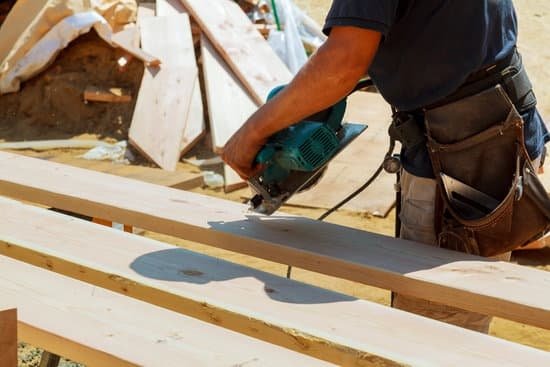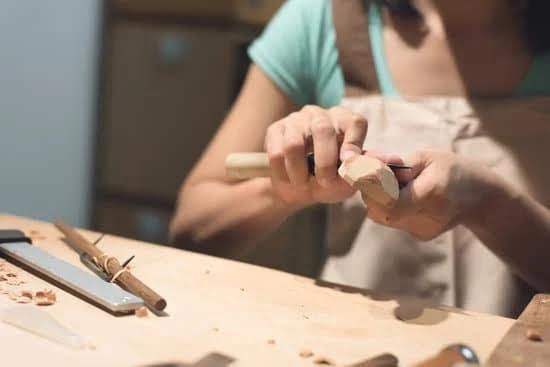Are you looking to elevate your woodworking skills and achieve a professional finish in your projects? Look no further than fine woodworking hand planes.
These essential tools have been a staple in the world of woodworking for centuries, offering precision and control that power tools simply can’t match. In this article, we will explore the world of fine woodworking hand planes, covering everything from their history and types to choosing the right one for your project and mastering their use.
Hand planes are an integral part of any fine woodworking toolkit, allowing craftsmen to smooth, shape, and flatten wood with unparalleled accuracy. With a rich history dating back to ancient civilizations, hand planes have stood the test of time as indispensable tools in traditional woodworking practices. Today, they continue to be revered by artisans for their ability to achieve exceptional results that power tools struggle to replicate.
In the following sections, we will delve into the various aspects of fine woodworking hand planes. We will break down the different types of hand planes and their specific uses, offer guidance on selecting the right hand plane for your needs, and provide valuable insights into their anatomy and maintenance.
Additionally, we will explore techniques for using hand planes effectively and discuss the benefits of both vintage and modern hand planes. Whether you’re a seasoned craftsman or just beginning your woodworking journey, understanding and mastering the art of fine woodworking hand planes is sure to enhance your workmanship.
Types of Fine Woodworking Hand Planes
Once you have decided to incorporate fine woodworking hand planes into your woodworking toolkit, it is essential to understand the different types available and their specific uses. Here is a breakdown of the various types of hand planes commonly used in fine woodworking:
1. Smoothing Plane: This type of hand plane is designed for creating a smooth, even surface on wood. It is ideal for finishing touches and removing small imperfections from the wood’s surface.
2. Jack Plane: The jack plane is a versatile tool that can perform both rough and finish work. It is perfect for quickly leveling and smoothing large surfaces of wood.
3. Block Plane: A block plane is smaller in size and easy to handle, making it suitable for end grain work, shaping edges, and fitting pieces together. It is an essential tool for precision work in fine woodworking.
4. Shoulder Plane: This hand plane features a narrow blade and is specifically designed for cleaning up shoulders and creating precise joinery in woodworking projects.
Choosing the Right Hand Plane for Your Project:
When selecting a hand plane for your project, consider factors such as the type of wood you are working with, the size of your project, and your budget. Different hand planes are more suitable for specific tasks and materials, so matching the right hand plane to your woodworking needs will ensure efficiency and professional results.
For instance, when working with hardwoods like oak or maple, a larger jack plane may be more effective at leveling surfaces due to its longer sole. On the other hand, when dealing with smaller or delicate pieces of wood, a block plane may be more convenient for achieving precision in shaping or fitting components together.
By understanding the different types of fine woodworking hand planes available and carefully considering your project requirements, you can make informed decisions when adding these essential tools to your workshop arsenal.
Choosing the Right Hand Plane for Your Project
When it comes to fine woodworking, choosing the right hand plane for your project is crucial for achieving exceptional results. Whether you are smoothing, shaping, or flattening wood, selecting the appropriate hand plane will make a significant difference in the quality of your work. There are several factors to consider when making this decision, and understanding these considerations will help you match the right hand plane to your specific woodworking needs.
Factors to Consider
One of the most important factors to consider when choosing a hand plane for your project is the type of wood you will be working with. Different wood types require different hand planes for optimal results.
Additionally, the size of your project will also play a role in determining the right hand plane for the job. Larger projects may require a more versatile hand plane, while smaller projects may benefit from a specific type of hand plane designed for more detailed work.
Budget is another essential factor to take into account when selecting a hand plane. Fine woodworking hand planes can vary greatly in price, and it’s important to find a balance between quality and affordability. Consider how frequently you will be using the hand plane and invest in one that aligns with your budget without compromising on quality.
Tips for Matching the Right Hand Plane
To ensure you are matching the right hand plane to your specific woodworking needs, it’s important to research and understand the different types of hand planes available. Educate yourself on the specific uses and benefits of each type, and consider which features are most important for your projects.
It’s also helpful to seek advice from experienced woodworkers or professionals who can provide guidance based on their own experiences using fine woodworking hand planes. Additionally, experimenting with different types of hand planes on small test projects can give you valuable insight into which one best suits your working style and preferences. By considering these factors and tips, you can confidently choose the right hand plane for any fine woodworking project.
Understanding Hand Plane Anatomy
When it comes to fine woodworking hand planes, understanding the anatomy of these tools is crucial for achieving optimal results. A hand plane is composed of various parts that work together to smoothly and accurately shave wood, creating a clean and polished finish. Whether you are a beginner or an experienced woodworker, having a comprehensive understanding of the different components of a hand plane will help you use it effectively and maintain it properly.
Parts of a Hand Plane
The main parts of a hand plane include the blade (or iron), chipbreaker, cap iron, frog, lever cap, knob, tote, sole, and adjustment mechanisms. Each part plays a specific role in the functioning of the hand plane. The blade, for example, is responsible for cutting through the wood fibers while the chipbreaker helps control tear-out. Understanding how each part contributes to the overall performance of the hand plane is essential for achieving precise and smooth cuts.
Maintaining Hand Planes
Proper maintenance of individual components such as sharpening the blade and adjusting the frog and cap iron is necessary for ensuring that your hand planes perform at their best. Additionally, keeping the sole flat and free from debris allows for consistent contact with the workpiece. Regular inspection and cleaning of all parts will also extend the lifespan of your fine woodworking hand planes.
By mastering the anatomy of hand planes and learning how to maintain them effectively, woodworkers can ensure that their tools are always ready for use when tackling new projects. Whether you prefer vintage or modern hand planes, understanding their anatomy is essential for fine woodworking success.
Techniques for Using Hand Planes
When it comes to fine woodworking, the use of hand planes is essential for achieving a professional finish. Whether you are smoothing out rough surfaces, shaping edges, or flattening wood, knowing how to properly use a hand plane is crucial. To start, it’s important to select the right type of hand plane for the specific task at hand.
Different types of hand planes such as smoothing, jack, block, and specialty planes each have unique uses and benefits. For example, a smoothing plane is designed for creating a smooth surface on wood, while a jack plane is versatile and can be used for various tasks such as rough shaping and preliminary smoothing.
Once you’ve chosen the appropriate hand plane for your woodworking project, it’s essential to understand the proper techniques for using it effectively. Begin by ensuring that the blade of the hand plane is sharp and properly adjusted. When using a hand plane for smoothing wood, always work with the grain to avoid tear-out and achieve a clean surface. Additionally, maintain consistent pressure on the plane and pay attention to your body positioning for optimum control and precision.
To achieve the best results with a hand plane, avoiding common mistakes is crucial. One typical error is applying too much downward force on the hand plane which can lead to gouging or unevenness in the wood surface. It’s also important to regularly check the blade sharpness and make any necessary adjustments during use to ensure smooth cutting action.
In addition to understanding basic techniques for using hand planes, learning more advanced methods such as edge jointing and shooting boards can help fine woodworkers take their skills to the next level. With patience and practice, mastering these techniques will enable craftsmen to achieve impeccable finishes on their woodworking projects using fine woodworking hand planes.
Maintenance and Sharpening of Hand Planes
Maintaining and sharpening your fine woodworking hand planes is essential to ensure optimal performance and longevity. Proper care of your hand plane will not only improve its functionality but also contribute to the quality of your woodworking projects. Here are some best practices for keeping your hand planes in top condition:
- Regular Cleaning: After each use, it’s important to clean your hand plane thoroughly to remove wood shavings, dust, and any built-up residue. Use a brush or compressed air to clean all the nooks and crannies of the plane.
- Applying Lubricant: To prevent rust and corrosion, it’s recommended to lubricate the metal components of the hand plane with a thin layer of oil. Be sure to wipe off any excess oil before using the plane on wood.
- Storage: When not in use, store your hand planes in a dry place away from moisture and extreme temperatures. Consider using protective cases or sleeves to prevent damage during storage or transportation.
In addition to regular maintenance, keeping the blade of your hand plane sharp is crucial for achieving smooth and precise results in fine woodworking. Here’s an overview of sharpening tools and techniques for maintaining a sharp blade:
- Honing Guide: A honing guide is a tool that helps maintain consistent angles when sharpening the blade. It ensures that you achieve a uniform edge along the length of the blade.
- Sharpening Stones: Sharpening stones come in various grit levels, ranging from coarse to fine. Start with a coarser stone to remove any nicks or imperfections on the blade, then progress to finer stones for honing and polishing.
- Honing Technique: When sharpening the blade, apply even pressure and consistent strokes along the entire length of the blade. Keep track of how many strokes you perform on each side to maintain symmetry.
By following these maintenance and sharpening practices, you can ensure that your fine woodworking hand planes remain in peak condition for all your future projects. Regular upkeep and keeping blades sharp will contribute significantly to achieving professional finishes in your woodworking endeavors.
Fine Woodworking Hand Planes
When it comes to fine woodworking hand planes, woodworkers often find themselves faced with the decision of whether to invest in traditional, vintage hand planes or opt for newer, technologically advanced models. Both options have their own set of pros and cons, making it essential for woodworkers to consider their specific needs before making a choice.
Traditional hand planes, often sourced as vintage tools, are revered for their craftsmanship and historical significance. Many woodworking purists appreciate the authenticity and craftsmanship associated with using vintage hand planes. These classic tools offer a sense of tradition and connect modern woodworkers to the time-honored practices of their craft. Additionally, vintage hand planes are often made from high-quality materials and feature meticulous design details that may be difficult to replicate in modern manufacturing.
On the other hand, modern hand planes are equipped with advancements that cater to the needs of contemporary woodworkers. From ergonomic designs and lightweight materials to innovative blade technology and adjustable features, new hand planes offer convenience and precision that may not be present in traditional models. With modern machining techniques and technological innovations, these hand planes can provide consistent performance and durability.
Ultimately, the decision between old vs. new fine woodworking hand planes will depend on a woodworker’s personal preferences, budget constraints, and intended use. Some may prefer the authenticity and historical charm that comes with using traditional hand planes while others may prioritize convenience and functionality offered by modern alternatives. Regardless of the choice made, both vintage and new hand planes have their unique place in the world of fine woodworking.
Top Recommended Fine Woodworking Hand Planes
When it comes to fine woodworking, the right tools can make all the difference in achieving professional and high-quality results. One essential tool for any woodworker’s arsenal is a set of fine woodworking hand planes.
These versatile tools are used for shaping, smoothing, and refining wood surfaces, making them indispensable for creating beautiful and precise woodworking projects. Whether you’re a seasoned craftsman or just starting out in woodworking, having a reliable set of hand planes is crucial for achieving the perfect finish on your creations.
There are many options available when it comes to fine woodworking hand planes, each with its own unique features and benefits. From smoothing planes to jack planes, block planes, and more, the variety can be overwhelming when trying to choose the right one for your needs. Factors such as project size, wood type, budget, and personal preferences all play a role in determining which hand plane is best suited for your specific woodworking projects.
To help narrow down the options and find the best fine woodworking hand planes for your needs, we’ve compiled a list of some top recommended hand planes available on the market today. These recommendations are based on performance, user feedback, durability, and overall value. With the right hand plane in your toolkit, you can take your woodworking skills to new heights and achieve professional results with ease.
| Hand Plane Model | Features |
|---|---|
| Stanley No. 4 Smoothing Bench Hand Plane | Adjustable frog design for precise blade positioning; cast-iron construction for durability |
| Lie-Nielsen Low Angle Jack Plane | Precision-machined bronze body; versatile low-angle blade for end grain work |
| Veritas Low-Angle Block Plane | Lateral blade adjustment; adjustable throat plate for fine tuning shavings |
These top recommended hand planes offer superior performance and craftsmanship that will enhance your woodworking experience and deliver exceptional results on every project. When choosing a hand plane to add to your collection, consider factors such as ergonomics, blade quality, adjustability features, and overall build quality to ensure that you invest in a tool that will serve you well for years to come.
Conclusion
In conclusion, fine woodworking hand planes are an essential tool for any woodworker looking to achieve a professional and polished finish. As discussed in this article, the history and importance of hand planes in woodworking cannot be understated. From their traditional use to their modern adaptations, hand planes have stood the test of time as a valuable tool for shaping, smoothing, and flattening wood.
When it comes to choosing the right hand plane for your project, it’s crucial to carefully consider factors such as wood type, project size, and budget. Understanding the anatomy of a hand plane and knowing how to properly maintain and adjust its components is also key to achieving optimal performance. Furthermore, mastering the techniques for using hand planes and learning how to effectively maintain and sharpen them will greatly contribute to the quality of your woodworking projects.
Ultimately, the art of fine woodworking with hand planes requires dedication and practice. Whether you choose a vintage hand plane or a modern alternative, the value of incorporating hand planes into your woodworking endeavors cannot be underestimated. With patience and skillful mastery, utilizing fine woodworking hand planes can elevate your craftsmanship and bring a new level of precision to your projects. So why not explore this timeless craft and see where it takes you?
Frequently Asked Questions
What Plane Is Used for Fine Finishing?
The plane used for fine finishing in woodworking is typically a smoothing plane. This type of hand plane is specifically designed to create a smooth and even surface on wood, making it perfect for final touches on a project.
Who Makes the Best Hand Wood Planer?
Determining who makes the best hand wood planer can be subjective, as it often depends on personal preference and individual needs. Some well-known and reputable brands in this category include Stanley, Lie-Nielsen, and Veritas, each offering different features and benefits.
What Planes Should a Woodworker Have?
A woodworker should have a set of essential planes to cover various tasks in woodworking. These typically include a block plane for small-scale trimming and end-grain work, a jack plane for initial stock removal and leveling, a smoothing plane for fine finishing, and potentially specialty planes like a shoulder plane or router plane for more specific tasks.
Having this range of planes ensures versatility and precision in woodworking projects.

Hi everyone! I’m a woodworker and blogger, and this is my woodworking blog. In my blog, I share tips and tricks for woodworkers of all skill levels, as well as project ideas that you can try yourself.





